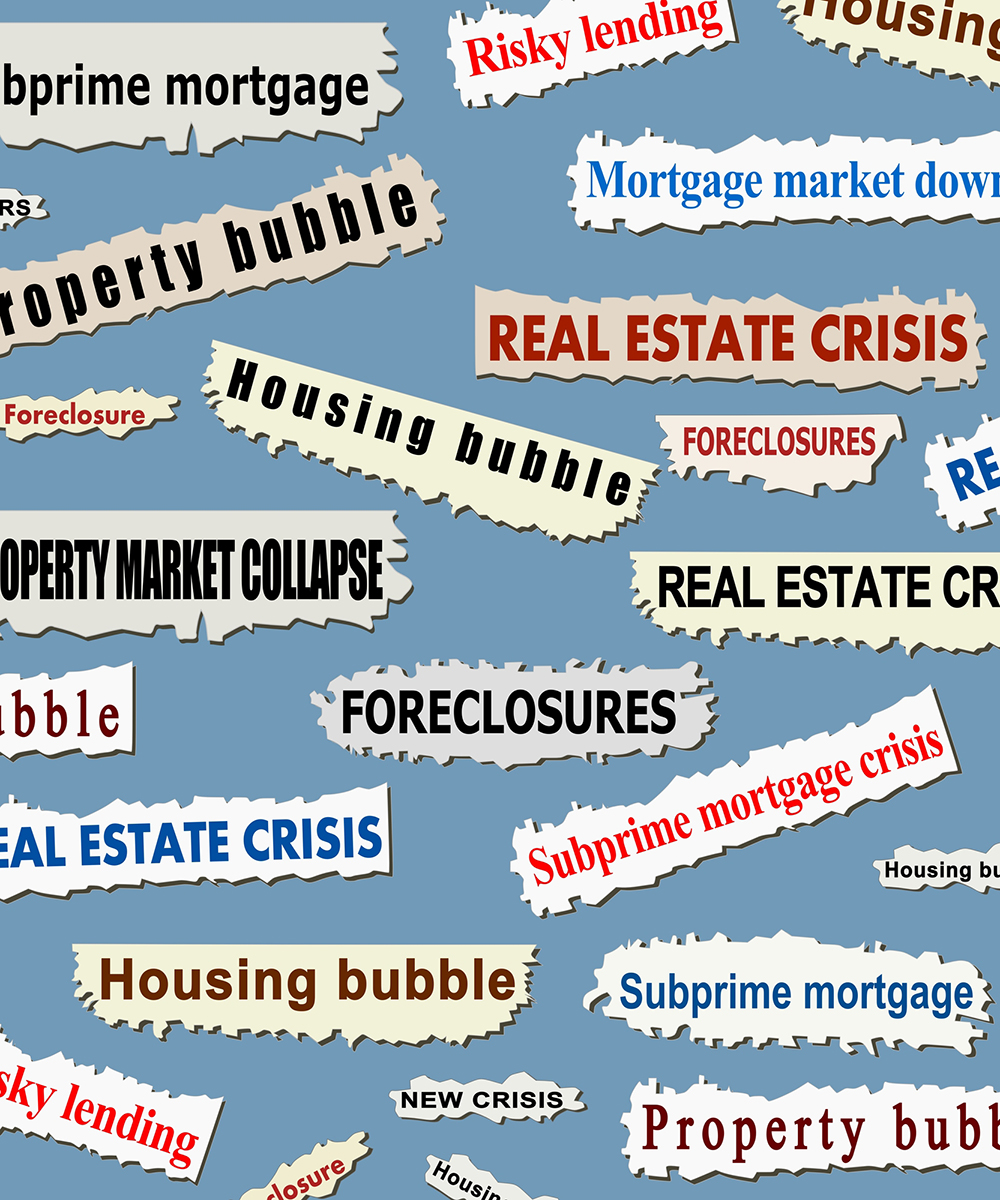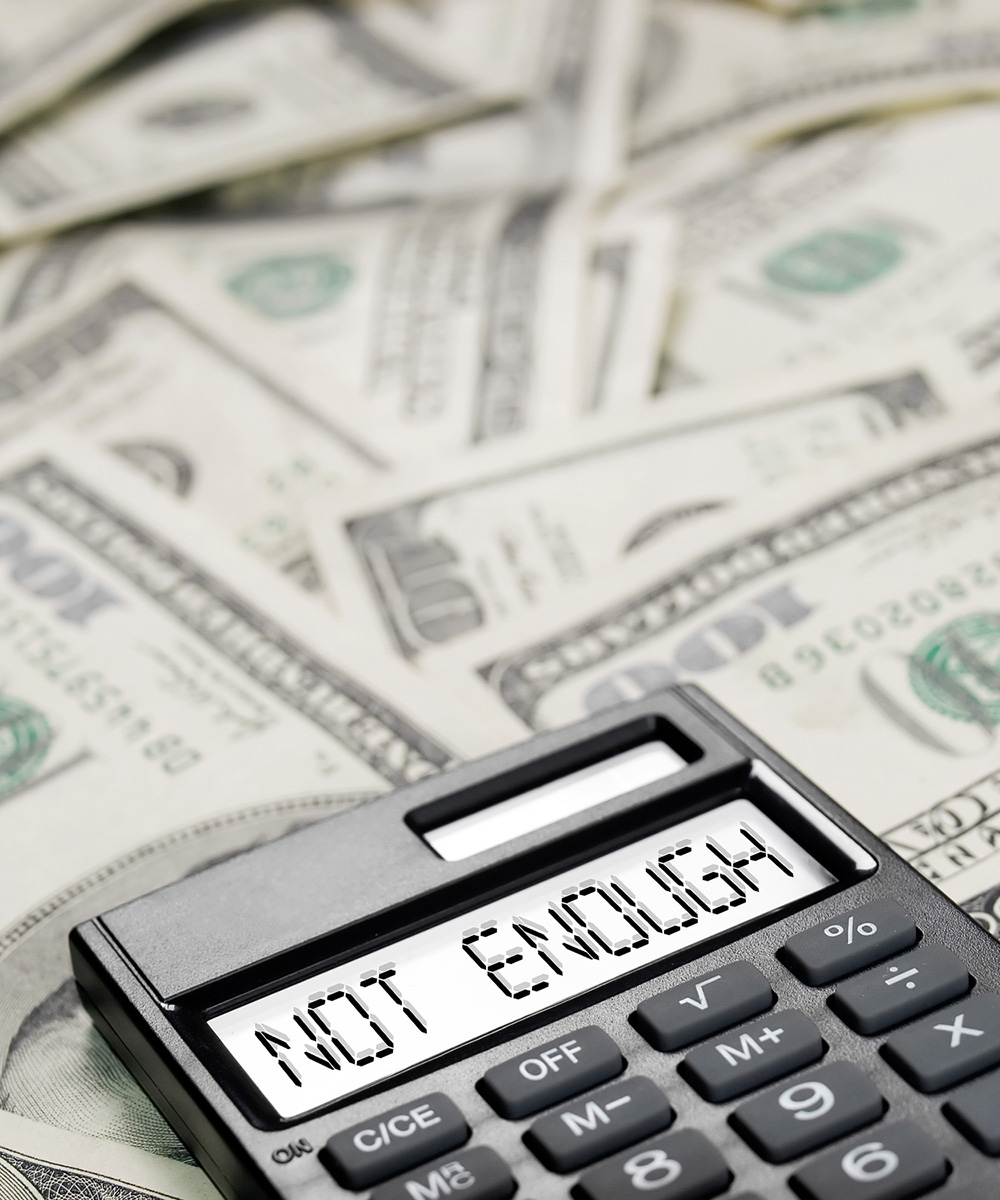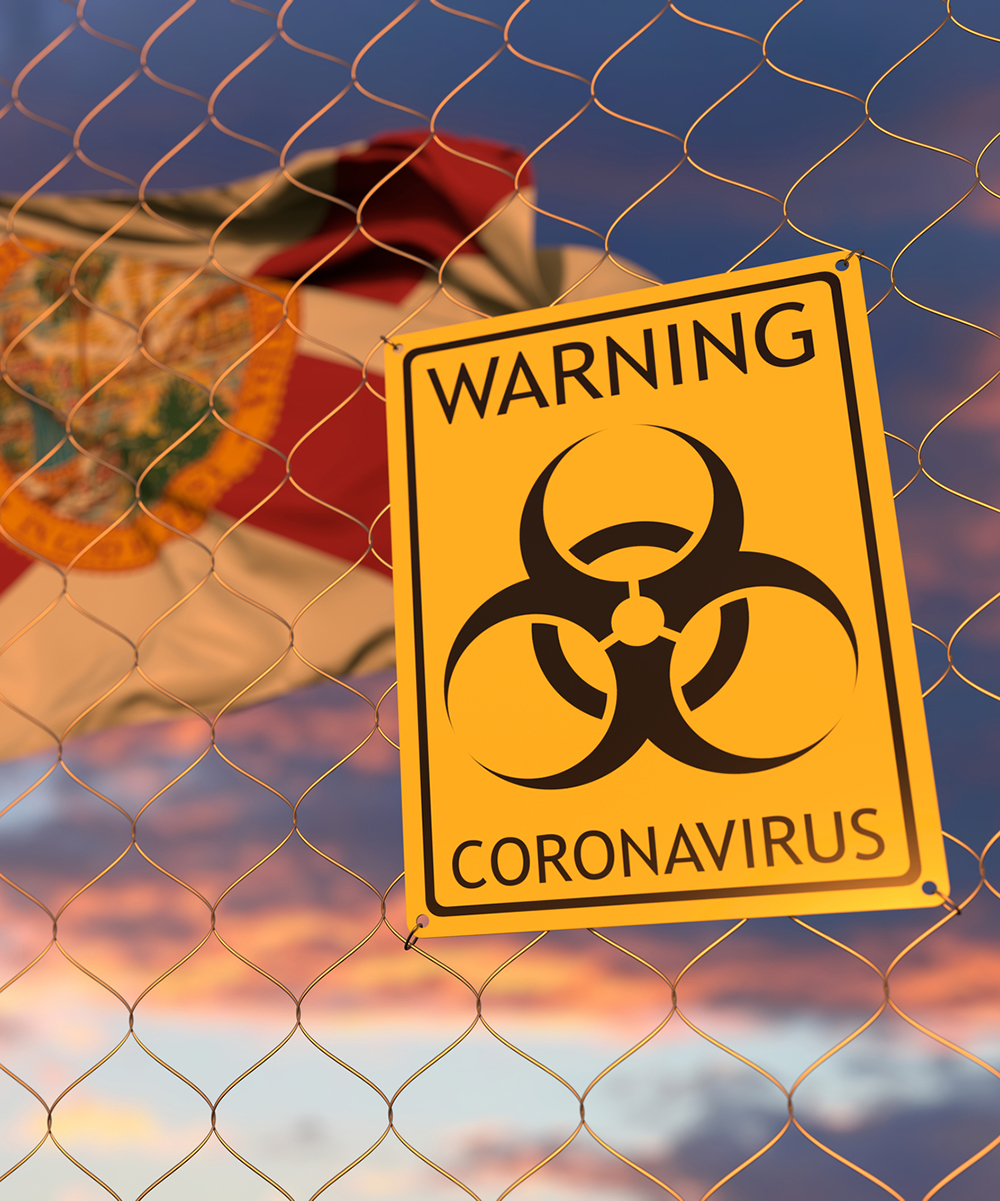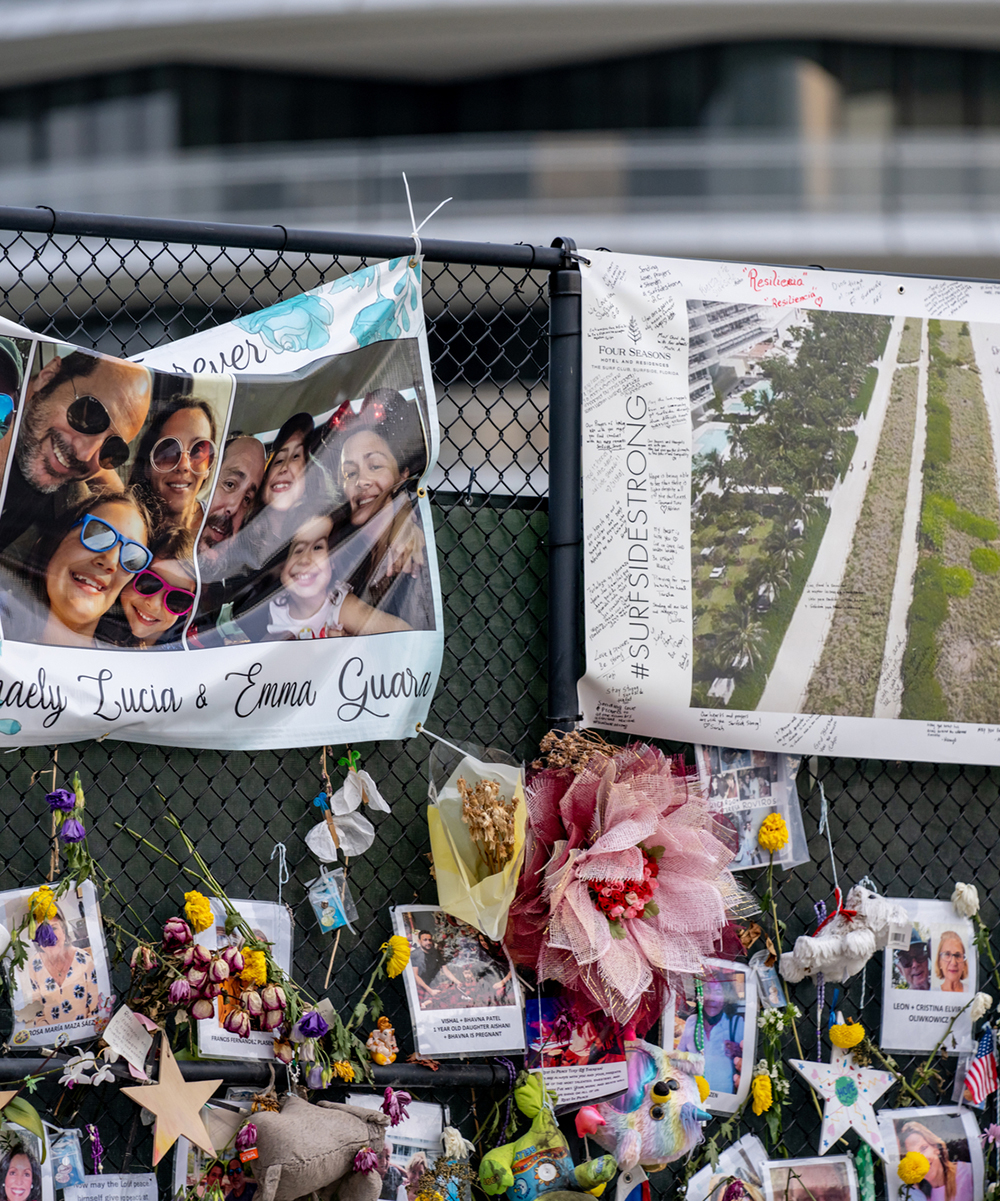Fill out your information and gain access to our FREE White Paper “What Aging Buildings Mean to the Future of the Condominium Concept”.
How We Got Here
As a consequence of hurricanes, business cycles, and fluctuations in the real estate market over the last 20 years, financial distress has been caused to those who live in Community Associations as well as the Community Association entities themselves. There presently exist hundreds (if not thousands) of communities whose stories can be illustrated by the timeline below.
Many of these communities presently have underfunded budgets, above-average delinquency rates, inadequate cash flow, and lack adequate reserves to accomplish necessary preventative maintenance and actual present maintenance needs.
Overall, Boards are starting to realize that there is a lot to do, with little or no money to do it.
Luckily, special assessments and conventional lending are not the only funding options available to Associations. Private lending options are available to Associations that do not qualify for conventional lending, and can provide funds to make necessary repairs, perform required maintenance, or even jumpstart reserve funding.
Does your community currently face any of these harsh realities?
Reserves are low or non-existent.
Budget is underestimated and/or underfunded.
Owners can’t afford the present expense of delayed maintenance or needed repair projects.
Buildings are in need of overdue maintenance and/or repair.
Funds are needed to complete necessary projects.
The Building Maintenance Epidemic Timeline
2001 to 2005: Everyone Wants to Live and Own Property in Florida
During the period of 2001 through 2005, the United States, and particularly, Florida, experienced a housing bubble. During that period, interest rates fell, and mortgage denial rates also fell as banks and other lenders set aside their traditional loan qualification standards and instead, relied heavily on the ability to securitize and repackage subprime loans. In addition, several government programs were established to assist with and promote homeownership. As a result, the housing market in Florida was expanding at a record pace. So much so, that there was a resulting shortage of properties available for sale.
In addition to the construction of new Condominium buildings, in response to the continuing shortage of saleable Condominiums in Florida, apartment complex owners took advantage of the booming market conditions by selling their apartment complexes, at top dollar, to conversion developers – resulting in the conversion of both newer and older apartment building complexes into Condominium Associations. Many of these converted complexes were already in need of maintenance and repair. However, after being purchased largely by first-time homeowners with little to no money down and/or with short-term, favorable, adjustable-rate mortgages, and at purchase prices that reflected increases in excess of 25% of the prior year’s valuation, many of these ready-made Condominium Associations already lacked significant resources for necessary maintenance and repairs following conversion.

2005 to 2006: It’s Not Always Sunny in Florida
By late 2005, the housing bubble began to burst. Interest rates were consistently raised by the Federal Reserve to stem inflation. As a result, the rates on short-term adjustable-rate mortgages increased and many unit owners experienced huge increases in monthly mortgage payments. Many Condominium buildings began to feel the effects of the market turn, and their volunteer Boards of Directors postponed items of regular maintenance in an effort to keep Condominium budgets and resulting maintenance assessments low. The mentality that minor repairs and maintenance could be delayed until financial conditions improved turned out to be flawed, as financial conditions did not improve, and neglected minor repairs and maintenance gave way to the need for much more costly major repairs and replacements.
Making matters worse, Florida endured what was at that time, the most active Atlantic Hurricane Season on record, which included Hurricanes Katrina and Wilma, both wreaking havoc and resulting in significant damage to many Florida Condominium buildings, as well as unit values. As many of the Condominiums damaged by these storms had at best inadequate reserves, they lacked funds to meet insurance deductibles and/or to fund necessary repairs to the property while awaiting insurance proceeds. As a result, many Condominium Boards found themselves in the unenviable position of having to levy special assessments for emergency repairs. This added financial pressure in an already downturned housing market resulted in many properties falling into positions of negative equity. Unfortunately, many owners who simply could not bear the increasing financial burden fell into foreclosure. In addition, owners who had purchased Condominiums in the housing bubble as investment properties and now found themselves in negative equity situations chose to walk away from those properties resulting in an increasing number of strategic foreclosure situations.

2007 to 2009: My Nest Egg is Now a Liability
By the end of 2006, more than 1.25 million foreclosures had been filed nationwide for the year – a number that would continue to increase significantly for the next few years. Banks and Courts alike struggled to keep up with the increasing foreclosure load. In addition to the foregoing, 2008 saw a downturn in the stock market that was fueled by skyrocketing default and foreclosure rates. By the year-end of 2009, nearly 4 million foreclosures were filed for the year, and more than 2.2 percent of all households nationwide were in some stage of foreclosure.
By that time, Condominium Associations faced huge deficits created by non-paying owners. Moreover, added financial pressure was placed upon paying owners who were left to bear the financial burden of non-paying owners. As a result, many Condominiums lacked sufficient financial resources to meet their day-to-day operating expenses, let alone to perform ordinary, preventative, or even necessary maintenance to the buildings. Consequently, many Condominiums continued to lack even minimal maintenance and many fell into a state of disrepair.

2010 to 2015: The Snow Ball Effect
Beginning in 2010, there was an increase of investors who entered the market with the assistance of legislation under the Distressed Condominium Relief Act, which encouraged the bulk acquisition of fractured Condominium projects by protecting the acquiring investor from significant liabilities which might otherwise have been inherited from the developer. This legislation opened the window for investors to purchase highly undervalued units without liability concerns relating to statutory warranties, unfunded reserves, past due assessments, or deficit funding obligations. In addition to bulk buyers, there was an increase in investor purchasers who took advantage of purchasing distressed units being unloaded by the financial institutions, post-foreclosure, at low market rates for purposes of flipping the units at a later time or utilizing the units as rental properties.
In the years that followed, the housing market began to slowly rebound. However, Condominium owners had become firmly entrenched in the mindset of maintaining underfunded budgets and waiving statutorily mandated reserves for deferred maintenance in order to keep maintenance assessments low.

2015 to 2018: The Underfunding Continues
In many Associations, owners who purchased below-market-rate condos in the height of the recession and real estate market collapse now represent the “Majority” of the membership. That portion of the membership continues to compel their Board(s) not to raise maintenance, not to fund reserves, and overall not to increase the financial obligation of the owners. Buildings in 2006 were 15 years younger than they are today and as such require more maintenance and repairs today and in the future than they did in the past. The underbudgeting began with a noble purpose, that being to assist the community’s financially struggling owners by keeping assessments low and not causing any special assessments. This sound idea in the short term has become a financial nightmare in the long term for many Community Associations throughout the State of Florida and beyond.

2019 to 2021: The Financial Struggle Continues — COVID-19 Arrives
20 years in the making and the lack of preventative and actual maintenance becomes both obvious and problematic. As part of the lack of maintenance, many aged buildings postpone their 40 and 50-year certifications. In addition, the associations lacked the ability to assess the funds sufficient to rectify 20 plus years of neglected maintenance obligations. Making matters worse, by early 2020, COVID-19, a global pandemic, causes additional delays in existing and planned projects and additional financial burdens upon the membership resulting in a greater or renewed reluctance to increase assessment(s) or cause any special assessment(s). Buildings already behind on their 40 and 50-year certifications are further delayed.

June 24th, 2021: The Unthinkable Occurs
Champlain Towers South, a 12-story beachfront condominium in the Miami suburb of Surfside, Florida, partially collapses. This tragedy draws worldwide attention and places a renewed focus on the importance of building maintenance and safety.

2022 and Beyond: The Future of Condominiums
In light of recent events, it is anticipated that legislation will be introduced that will limit the ability to partially or fully waive mandatory reserves. As a consequence, it is further anticipated that condominium living will become more expensive as annual budgets are increased and special assessments are imposed to fund maintenance and repair issues that previously went unaddressed.
With the concept of Condominiums in Florida approaching the sixty-year mark, many of the Condominium buildings in Florida are, simply stated, aging. In order to combat the effects of aging on these structures, significant repairs are needed to maintain structural integrity. As Condominium buildings reach important age milestones and have endured not only time but the unyielding weather elements unique to the Florida peninsula, it is more important than ever that these buildings are properly funded, maintained, and repaired to ensure a brighter future and the long-term safety and well-being of all residents.
As many Condominiums turn their focus to the immediate need to rectify the accelerated state of disrepair of their buildings, they are faced with the challenge of identifying funding sources that will make financial sense and not unduly burden their members. With special assessments likely to prove particularly burdensome to members given the likelihood of the need for large-dollar projects over a relatively short period of time, other funding sources are needed. Conventional loans from banking institutions are a viable alternative to special assessments in that they provide a vehicle for funding large-dollar projects while allowing repayment over an extended period of time. However, conventional loans through banking institutions are not typically available to Associations with moderate to large delinquency rates, and will likely not be readily available to Condominiums with poor maintenance histories in light of the recent tragedy.
Luckily, special assessments and conventional lending are not the only funding options available to Condominium Associations. Private lending options are available to Condominiums that do not otherwise qualify for conventional lending and can provide funds to make necessary repairs, perform required maintenance, or even jumpstart reserve funding. CondoHOALoans can assist in pairing Condominium Associations in need of funding, with private lenders capable of offering that funding. Please visit www.CondoHOALoans.com to learn more about funding options available to your Community, and to receive your FREE / NO-OBLIGATION Financial Health Survey.

The Building Maintenance Epidemic Timeline
2001 to 2005: Everyone Wants to Live and Own Property in Florida

During the period of 2001 through 2005, the United States, and particularly, Florida, experienced a housing bubble. During that period, interest rates fell, and mortgage denial rates also fell as banks and other lenders set aside their traditional loan qualification standards and instead, relied heavily on the ability to securitize and repackage subprime loans. In addition, several government programs were established to assist with and promote homeownership. As a result, the housing market in Florida was expanding at a record pace. So much so, that there was a resulting shortage of properties available for sale.
In addition to the construction of new Condominium buildings, in response to the continuing shortage of saleable Condominiums in Florida, apartment complex owners took advantage of the booming market conditions by selling their apartment complexes, at top dollar, to conversion developers – resulting in the conversion of both newer and older apartment building complexes into Condominium Associations. Many of these converted complexes were already in need of maintenance and repair. However, after being purchased largely by first-time homeowners with little to no money down and/or with short-term, favorable, adjustable-rate mortgages, and at purchase prices that reflected increases in excess of 25% of the prior year’s valuation, many of these ready-made Condominium Associations already lacked significant resources for necessary maintenance and repairs following conversion.
2005 to 2006: It’s Not Always Sunny in Florida

By late 2005, the housing bubble began to burst. Interest rates were consistently raised by the Federal Reserve to stem inflation. As a result, the rates on short-term adjustable-rate mortgages increased and many unit owners experienced huge increases in monthly mortgage payments. Many Condominium buildings began to feel the effects of the market turn, and their volunteer Boards of Directors postponed items of regular maintenance in an effort to keep Condominium budgets and resulting maintenance assessments low. The mentality that minor repairs and maintenance could be delayed until financial conditions improved turned out to be flawed, as financial conditions did not improve, and neglected minor repairs and maintenance gave way to the need for much more costly major repairs and replacements.
Making matters worse, Florida endured what was at that time, the most active Atlantic Hurricane Season on record, which included Hurricanes Katrina and Wilma, both wreaking havoc and resulting in significant damage to many Florida Condominium buildings, as well as unit values. As many of the Condominiums damaged by these storms had at best inadequate reserves, they lacked funds to meet insurance deductibles and/or to fund necessary repairs to the property while awaiting insurance proceeds. As a result, many Condominium Boards found themselves in the unenviable position of having to levy special assessments for emergency repairs. This added financial pressure in an already downturned housing market resulted in many properties falling into positions of negative equity. Unfortunately, many owners who simply could not bear the increasing financial burden fell into foreclosure. In addition, owners who had purchased Condominiums in the housing bubble as investment properties and now found themselves in negative equity situations chose to walk away from those properties resulting in an increasing number of strategic foreclosure situations.
2007 to 2009: My Nest Egg is Now a Liability

By the end of 2006, more than 1.25 million foreclosures had been filed nationwide for the year – a number that would continue to increase significantly for the next few years. Banks and Courts alike struggled to keep up with the increasing foreclosure load. In addition to the foregoing, 2008 saw a downturn in the stock market that was fueled by skyrocketing default and foreclosure rates. By the year-end of 2009, nearly 4 million foreclosures were filed for the year, and more than 2.2 percent of all households nationwide were in some stage of foreclosure.
By that time, Condominium Associations faced huge deficits created by non-paying owners. Moreover, added financial pressure was placed upon paying owners who were left to bear the financial burden of non-paying owners. As a result, many Condominiums lacked sufficient financial resources to meet their day-to-day operating expenses, let alone to perform ordinary, preventative, or even necessary maintenance to the buildings. Consequently, many Condominiums continued to lack even minimal maintenance and many fell into a state of disrepair.
2010 to 2015: The Snow Ball Effect

Beginning in 2010, there was an increase of investors who entered the market with the assistance of legislation under the Distressed Condominium Relief Act, which encouraged the bulk acquisition of fractured Condominium projects by protecting the acquiring investor from significant liabilities which might otherwise have been inherited from the developer. This legislation opened the window for investors to purchase highly undervalued units without liability concerns relating to statutory warranties, unfunded reserves, past due assessments, or deficit funding obligations. In addition to bulk buyers, there was an increase in investor purchasers who took advantage of purchasing distressed units being unloaded by the financial institutions, post-foreclosure, at low market rates for purposes of flipping the units at a later time or utilizing the units as rental properties.
In the years that followed, the housing market began to slowly rebound. However, Condominium owners had become firmly entrenched in the mindset of maintaining underfunded budgets and waiving statutorily mandated reserves for deferred maintenance in order to keep maintenance assessments low.
2015 to 2018: The Underfunding Continues

In many Associations, owners who purchased below-market-rate condos in the height of the recession and real estate market collapse now represent the “Majority” of the membership. That portion of the membership continues to compel their Board(s) not to raise maintenance, not to fund reserves, and overall not to increase the financial obligation of the owners. Buildings in 2006 were 15 years younger than they are today and as such require more maintenance and repairs today and in the future than they did in the past. The underbudgeting began with a noble purpose, that being to assist the community’s financially struggling owners by keeping assessments low and not causing any special assessments. This sound idea in the short term has become a financial nightmare in the long term for many Community Associations throughout the State of Florida and beyond.
2019 to 2021: The Financial Struggle Continues — COVID-19 Arrives

20 years in the making and the lack of preventative and actual maintenance becomes both obvious and problematic. As part of the lack of maintenance, many aged buildings postpone their 40 and 50-year certifications. In addition, the associations lacked the ability to assess the funds sufficient to rectify 20 plus years of neglected maintenance obligations. Making matters worse, by early 2020, COVID-19, a global pandemic, causes additional delays in existing and planned projects and additional financial burdens upon the membership resulting in a greater or renewed reluctance to increase assessment(s) or cause any special assessment(s). Buildings already behind on their 40 and 50-year certifications are further delayed.
June 24th, 2021: The Unthinkable Occurs

Champlain Towers South, a 12-story beachfront condominium in the Miami suburb of Surfside, Florida, partially collapses. This tragedy draws worldwide attention and places a renewed focus on the importance of building maintenance and safety.
2022 and Beyond: The Future of Condominiums

In light of recent events, it is anticipated that legislation will be introduced that will limit the ability to partially or fully waive mandatory reserves. As a consequence, it is further anticipated that condominium living will become more expensive as annual budgets are increased and special assessments are imposed to fund maintenance and repair issues that previously went unaddressed.
With the concept of Condominiums in Florida approaching the sixty-year mark, many of the Condominium buildings in Florida are, simply stated, aging. In order to combat the effects of aging on these structures, significant repairs are needed to maintain structural integrity. As Condominium buildings reach important age milestones and have endured not only time but the unyielding weather elements unique to the Florida peninsula, it is more important than ever that these buildings are properly funded, maintained, and repaired to ensure a brighter future and the long-term safety and well-being of all residents.
As many Condominiums turn their focus to the immediate need to rectify the accelerated state of disrepair of their buildings, they are faced with the challenge of identifying funding sources that will make financial sense and not unduly burden their members. With special assessments likely to prove particularly burdensome to members given the likelihood of the need for large-dollar projects over a relatively short period of time, other funding sources are needed. Conventional loans from banking institutions are a viable alternative to special assessments in that they provide a vehicle for funding large-dollar projects while allowing repayment over an extended period of time. However, conventional loans through banking institutions are not typically available to Associations with moderate to large delinquency rates, and will likely not be readily available to Condominiums with poor maintenance histories in light of the recent tragedy.
Luckily, special assessments and conventional lending are not the only funding options available to Condominium Associations. Private lending options are available to Condominiums that do not otherwise qualify for conventional lending and can provide funds to make necessary repairs, perform required maintenance, or even jumpstart reserve funding. CondoHOALoans can assist in pairing Condominium Associations in need of funding, with private lenders capable of offering that funding. Please visit www.CondoHOALoans.com to learn more about funding options available to your Community, and to receive your FREE / NO-OBLIGATION Financial Health Survey.

